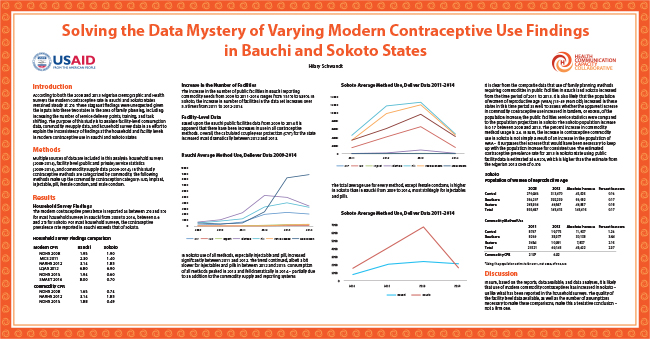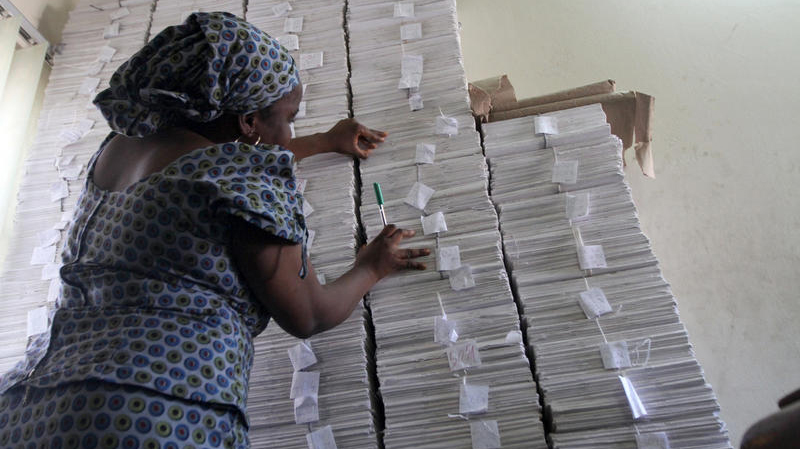Solving the Data Mystery of Varying Modern Contraceptive Use in Nigeria

Poster of HC3’s findings presented at the Population Association of America conference in San Diego held April 30-May 2, 2015.
Download PDF of poster here.
In April 2014, the USAID Mission in Nigeria asked HC3 to help solve a data mystery. The Nigerian Demographic and Health Surveys in 2008 and 2013 reported stagnant, low contraceptive prevalence rates in two northern states, Bauchi and Sokoto, despite targeted intervention efforts. In contrast to the household survey findings, reports from facilities on use and reports on commodities delivered indicated a different scenario – one of increasing contraceptive use. We were asked to examine the various data sources to try and discern the actual levels of contraceptive use in these two Northern Nigerian States from 2009 to 2014.
After reviewing all data sources, it appeared as though contraceptive use had increased in these two states – not drastically, but certainly an increase, not a stagnation. HC3 reported these findings through a poster presentation at the Population Association of America conference in San Diego held from April 30 through May 2, 2015.
Recently, HC3 received more data to include in the analysis. We’ve conducted, and are in the process of preparing, a qualitative study to find answers to the puzzles that remain after data analysis – such as, why do these discrepancies between facility data and household survey data exist? Finally, we conducted a literature review on contraceptive use in these two states to help us understand the context of our findings. We will use these three studies to aid us in writing up and presenting the findings from this study. The final report should be ready for release later this summer.








Leave a Reply
Want to join the discussion?Feel free to contribute!